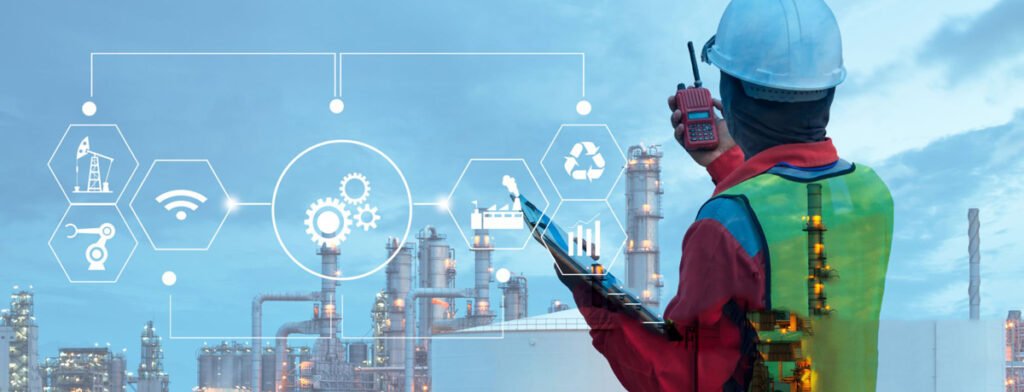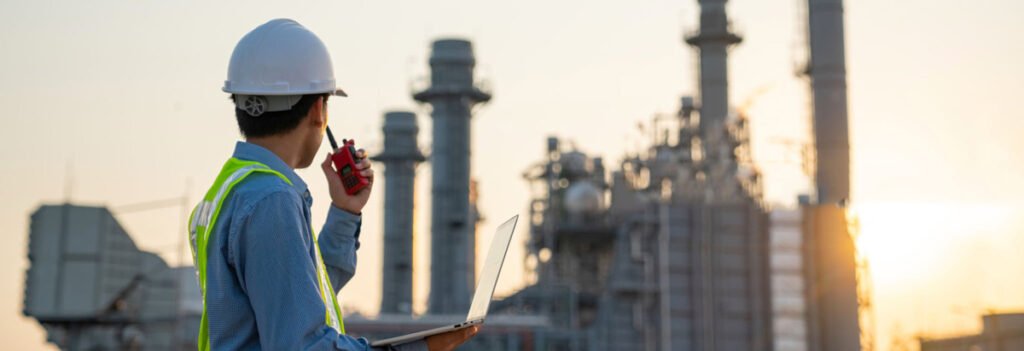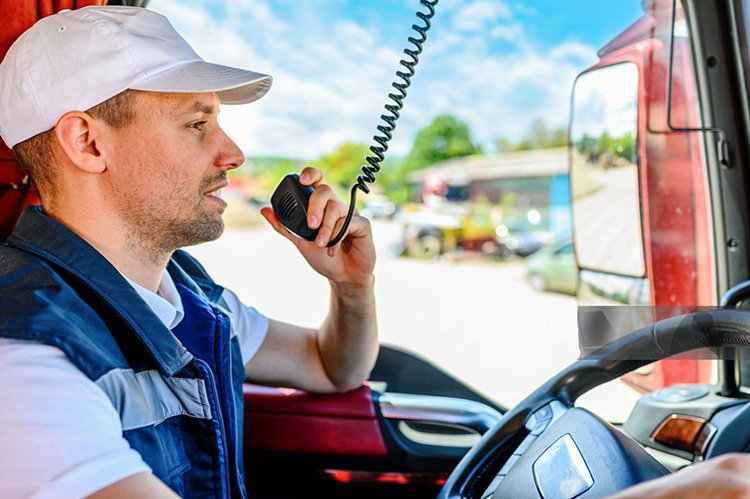Two-Way Radio Solutions for Oil & Gas
In the oil and gas industry—whether operating offshore rigs, remote exploration sites, pipelines, or refineries—reliable communication is critical. Workers face extreme environmental conditions, regulatory mandates, and mission-critical safety requirements. Traditional analog radios struggle with coverage and clarity, while cellular networks often fail in remote or hazardous zones. This post explores why intrinsically safe two‑way radios remain the backbone of communication in oil & gas, how digital migration, hardware, software, and deployment strategies come together, and ultimately, how organizations can achieve safer, more efficient operations—all while improving SEO leveraging keywords such as “oil gas radio solutions” and “intrinsically safe communication”.

1. Industry Challenges and Pain Points
1.1 Harsh Environmental Conditions & Safety Risks
Oil and gas operations involve high-risk environments with explosive gases, vapors, dust, and extreme temperature variations. Intrinsically safe (IS) radios are engineered to prevent sparks, overheating, or other ignition risks. These devices are certified under UL913, ATEX, IECEx and related standards. Proper use of IS radios reduces every ignition risk while maintaining communication reliability.
1.2 Communication Blackspots in Remote Locations
Offshore platforms, pipelines across deserts, or deep-well sites often lack cellular or broadband networks. Two‑way radio networks (especially digital systems) offer wide-area coverage and instant push-to-talk (PTT) functionality. In many cases, they remain the only viable voice link in remote energy fields (Hytera EU). Companies like TSHICOM specialize in repeater systems (e.g. TSC-R98D) that overcome signal blockages on platforms to maintain continuous communications.
1.3 Regulatory & Certification Requirements
Safety standards such as ATEX Zone 1/Class 1 Division 1 require communication equipment to be certified intrinsically safe. This is non-negotiable for offshore rigs, chemical plants, and refineries. Radios must pass rigorous testing including drop, thermal, humidity, and spark suppression scenarios (hytera.com).
2. Two‑Way Radio Solutions Overview
2.1 Analog vs. Digital Radio Technologies
Analog radios represent legacy systems—robust but lacking efficiency, clarity, and advanced features. Digital standards like DMR and TETRA offer better spectrum utilization, clearer audio under noise, encryption, GPS-enabled tracking, and N+M repeater redundancy. TETRA supports one-to-one, group, and broadcast calls with strong security and high availability suited for mission-critical environments (维基百科). Many oil & gas operators now favor digital migration for its operational advantages and lower total cost of ownership (hytera.com).
2.2 Intrinsically Safe Radio Devices
Leading vendors such as Hytera, Motorola/Sepura and Kenwood offer UL913- and ATEX/IECEx-certified portable radios (e.g. Hytera PT890Ex, HP79XEx, PNC460U) built with IS circuitry, anti-static tech, explosion-safe batteries, and material designs tested for extreme temperatures from –25 °C to +60 °C. These radios include emergency buttons, man-down alerts, GPS, noise cancellation, and long battery life suited to hazardous-field operations.
2.3 Integrated Voice, Data & Analytics Platforms
Modern communication platforms integrate two‑way radio voice, ruggedized LTE devices, IoT sensors, body-worn cameras, and dispatch consoles into a unified dashboard. Operators gain real-time asset visibility, incident analytics, and remote expert support via data streaming and PTT-over-cellular solutions.

3. Hardware Components & Specifications
3.1 Handheld Radios: Key Features
Essential features for oil & gas radios include IP67 ingress protection, robust drop resistance, extended-life batteries, high-decibel speaker and noise-cancelling microphones, voice-activated transmission (VOX), Bluetooth headsets, and customizable channel allocation. Routine inspections and battery‑management protocols are best practice for reliability.
3.2 Repeaters & Base Stations: Extending Coverage
Repeaters boost coverage, especially where infrastructure blocks direct line-of-sight (e.g. platforms, tunnels). Systems like Fern’s FRX‑1 crossband repeaters allow signals to bend around structures, eliminating dead zones in offshore platforms and tunnels. Digital repeaters in DMR or TETRA networks provide redundancy, trunking, and high channel capacity for multi-site operations.
3.3 Antenna Systems & Site Infrastructure
Effective deployment relies on optimal tower placement, directional or omnidirectional antennas, lightning arrestors, tower-mounted amplifiers, and grounding systems. RF propagation modelling and drive‑testing help predict and validate coverage and interference zones before rollout.
4. Software & Network Management
4.1 Fleet Management & GPS Tracking
Digital radios equipped with GPS and man-down sensors feed real‑time location and incident data into network software. Managers can geo‑fence areas, monitor lone workers, and respond more quickly to emergencies—enhancing safety and compliance.
4.2 Voice Dispatch Consoles & Group Call Configurations
Dispatch centers use scalable consoles for managing group and priority communications across zones. Features such as take‑over dispatch, emergency override channels, and selective group calls boost operational coordination and crisis response speed.
4.3 Data Analytics & Reporting for Operational Insights
Analytics tools provide logs on call volume, emergency button use, radio usage patterns, and maintenance status. Regular review of usage and fault data supports decisions on channel reconfiguration, firmware upgrades, and staff training—thus maximizing ROI.

5. Deployment Strategies & Best Practices
5.1 Site Survey & RF Coverage Planning
Prior to deployment, conduct RF propagation modelling and drive-tests to identify blind spots, interference sources, and optimal repeater locations. Using these insights is essential to avoid costly rework and ensure coverage meets safety standards.
5.2 Installation & Integration with SCADA/Telemetry
Hardware must integrate with existing SCADA or telemetry systems, enabling remote monitoring of valve status, pressure sensors, leak detection alerts, and alarms. Interoperability with IP networks or private LTE increases operational efficiency and situational awareness (Hytera EU).
5.3 Training & Change Management for Field Personnel
Successful implementation requires user-friendly protocols, hands-on training, quick-reference guides, and refresher courses. Establish standardized call signs, shift handover procedures, and emergency messaging protocols to ensure consistent use.
6. Case Studies & Success Stories
6.1 Offshore Rig Communication Enhancement
Hytera’s intrinsically safe DMR and TETRA radios deployed at offshore platforms have improved worker coordination, emergency response, and voice clarity while reducing equipment ownership costs.
6.2 Refinery Emergency Response Improvement
At refinery sites, group calling and instant voice contact with dispatch has reduced response times during alarms. Data analytics enabled by digital platforms delivered actionable insights and improved safety compliance documentation.
6.3 Onshore Pipeline Monitoring & Leak Detection
Remote pipeline sites have deployed GPS-enabled radios and SCADA integrations to detect anomalies. Devices trigger alerts for pressure drops, unauthorized activity, or equipment faults via intranet-linked reporting and dispatch monitoring.
7. ROI & Total Cost of Ownership
7.1 Cost‑Benefit Analysis of Digital Migration
Although upfront capex for digital radios and system infrastructure can exceed analog deployments, long-term benefits include lower licensing fees, fewer repeater sites, improved channel capacity, and operational reliability. Companies often see payback within 3–5 years.
7.2 Maintenance & Lifecycle Management
Routine radio inspections, battery replacement programs, firmware updates, and repair fallback arrangements extend lifecycle and reduce downtime. Service providers like TSHICOM offer after‑sales support and scheduled maintenance plans.
7.3 Scalability & Future‑Proof Investments
Digital platforms support IP-based expansion, adding new repeater sites or integrating private LTE networks, IoT sensors, bodycams, and remote devices. Future upgrades can be modular without replacing the entire infrastructure.
8. Conclusion & Recommendations
Key Takeaways
- Intrinsically safe digital radios are essential for safe, reliable communication in oil & gas.
- Modern solutions combine voice, data, GPS and analytics for real‑time visibility and operational efficiency.
- Rigorous site planning, certified hardware, and well‑trained personnel underpin effective deployment.
If you’d like to explore tailored two‑way radio solutions for your operation—whether onshore, offshore or pipeline network—request a professional site survey today. Early planning means safer operations, smoother deployment, and better ROI.

